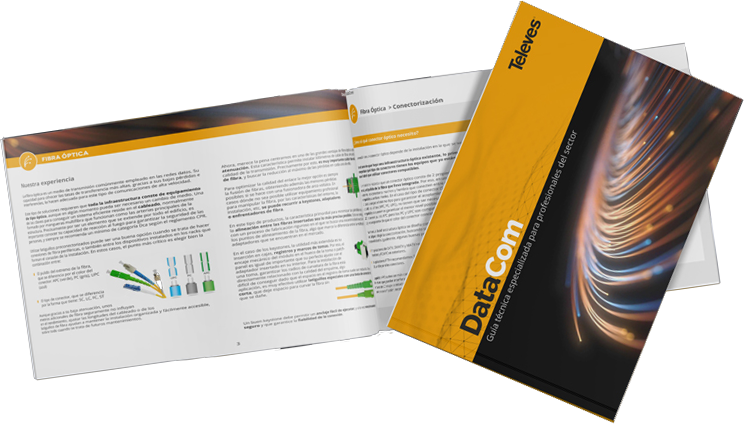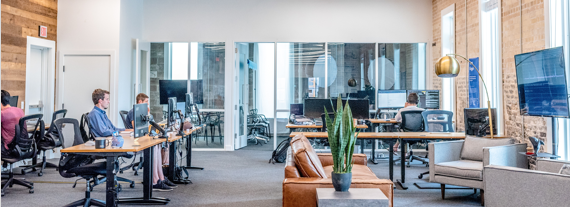CABLING SOLUTIONS
Data cable, optic fiber, connectors, racks and accessories intended for the installation of telecommunication infrastructures in different industries.
NETWORKING
Network electronics solutions that ensure quality, control and safety to data networks and communications.
Televes is a worldwide technology company specializing in the design, development and manufacture of telecommunication infrastructure solutions.
Today, Televes is the core of a consolidated and prestigious corporation, featuring more tan 20 industrial brands and services (11 international subsidiaries) and 75 invention patents.
9001 / 14001 / 45001
Years of experience in the industry
Countries. Presence and support
Professionals at your disposal
Find all the tools, products and professional equipment you need for your Televes installation.
Copper solutions
In communications, choosing the correct cable is essential so the information can be transferred quickly between different devices.
Optic fiber
High-capacity and high-performance transmission technology of an excellent quality showing great efficiency in long distances.
Racks
Cabinets/enclosures for distribution are designed to include, protect and identify the networks you use to access them.
Networking
Network electronics solutions that ensure quality, control and safety to data networks and communications.
Selecting the right optical fiber connector depends upon the installation it will be used in. If there is already existing optical fiber infrastructure, the first thing you should do is check which type of connectors are being used with that equipment because your connectors will have to be compatible.
It is important to remember that every optical fiber connector has two main properties: the connector type and the polishing type of the fiber inserted into it. This means that for an existing installation, the male and female connectors plugged into each other must be compatible in terms of both properties. The same connector type (SC, FC, LC, ST) must always be used to ensure proper mechanical coupling. The fiber polishing types (APC, PC, UPC) do not necessarily have to be the same, but they should be if you want to minimize loss. APC polishing must be matched with that same type, but the PC and UPC polishing types are compatible with each other. The quickest and easiest way to ensure compatibility is to make sure that the connector ends are the same color.
Finally, if your optical fiber infrastructure is being designed as completely new, you Will have more freedom to choose your connector types. In this case, you should always try to maintain as much uniformity as possible throughout the entire design. Here are some other best practices we recommend:
Connectors with APC polishing tend to be more expensive, but they can prevent return loss problems that can interfere with the signal. SC and LC connectors are simple but effective (an LC takes up half as much space as an SC), while FC connectors are threaded to improve attachment, which is needed in some outdoor applications.
Manual attachment is a common way to attach a female RJ45 connector to an Ethernet cable. However, the process can be done more quickly and easily by using a termination and cutting tool. First, let’s review the steps to follow for attaching a female connector manually:
Now, let’s compare this method with the termination and cutting tool. This time there is no need to pull downward on the pairs with force to insert them into their corresponding pins. In addition, the tool puts the connector in the correct position, and applying pressure with the tool crimps the pins and wires together and simultaneously trims the excess wire. It can be seen that using the tool makes attachment of the connector faster, easier, and more precise.
The video below demonstrates the time difference between the two options, and how easy it is to use the termination and cutting tool. You will see how 20 seconds can be saved for each connector, by watching this tutorial video.
Blank panels have a doublé purpose. In racks with passive ventilation they are more of an aesthetic solution, used to give the rack a more orderly appearance.
In racks with active ventilation, in addition to that aesthetic function, blank panels assist with air extraction by generating a tunnel effect. This helps cool air circulate more easily from the lower part of the rack to the top, providing cooling for the entire space.
Yes, an Ethernet switch can be used with optical fiber infrastructure, as long as it includes ports that are compatible with SFP. These ports allow connection of SFP devices, which are adapters that can expand the switch’s functionality through the use of single mode and multimode optical fiber cables.
In general, the most common types are known as SFP and SFP+ ports.
Various methods can be used to join two sections of optical fiber, although the most common methods are mechanical splicing and fusion splicing. A mechanical splicer is an acceptable option for occasional use. However, even though the tool is affordable, this advantage has to be weighed against the cost of the splice materials, which is 10 times higher than the cost of a fusion splice. If a poor result is achieved, the splice material cannot be reused, and specific optical equipment must also be available just to detect the problem. For all these reasons, fusion splicing is the best option for professionals who regularly work with optical fiber infrastructure. A fusion splicer measures optical losses after the fusion splice is completed. This provides secure information that the fusion has been performed correctly, and if it has not, the splice can be repeated at no extra cost. This method greatly reduces uncertainty and the possibility of flaws in the optical fiber cable.
In the case of specific applications where the lambdas are defined, it is possible to find devices that automatically take all of the optical measurements. This saves time and effort for the installer because the same process does not have to be repeated for each lambda.
Finally, a professional fusion splicer presents a fast, simple, and reliable fusion process as long as the steps are performed in the appropriate order.

Download the specialized technical guide for industry professionals , where you will find useful information, questions, tips, and videos about structured cabling and networking
DownloadIn this constantly evolving context, telecommunication infrastructures are a key factor for any business and environment. It is an essential requirement that helps users to adapt to changes and to bring about added value, both in their daily lives and at a competitive and global level.
At Televes we adapt our solutions to the following sectors:

Support for indoor telecommunication infrastructures projects in buildings and homes (ICT); equipment supply; cabling and technical tools to incorporate data services (Internet, TV, etc.).

Support in preparing telecommunication infrastructures projects, structured cabling supply and active devices to transfer data services to users.

Advanced multi-service infrastructure that allows you to offer a unique experience while maintaining the entertainment and services your customers are used to. Customer support and supply for comprehensive projects thanks to our wide experience in several telecommunication industries.
Technical capability
Experienced technical support at a national scale and supply of high-quality products to meet your needs.
Commercial and service
Televes listens carefully and seeks for solutions. Fast and efficient delivery services for a better support service.
Operational capabilities
Strong national and international presence to offer high-level pre-and post-sales support.
Warranty and post-sales
Customer satisfaction is essential for our brand; this is why post-sales support is part of our philosophy.